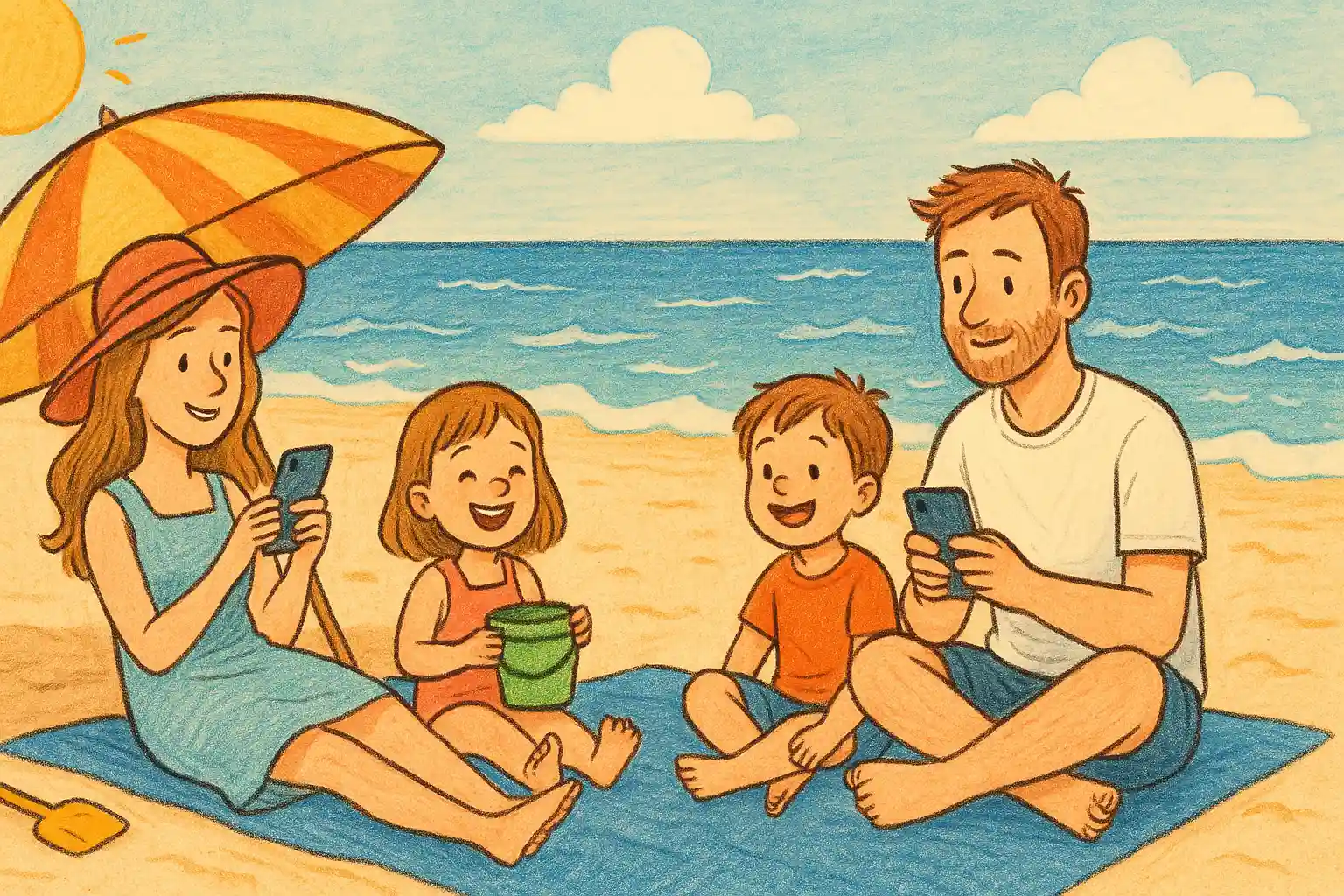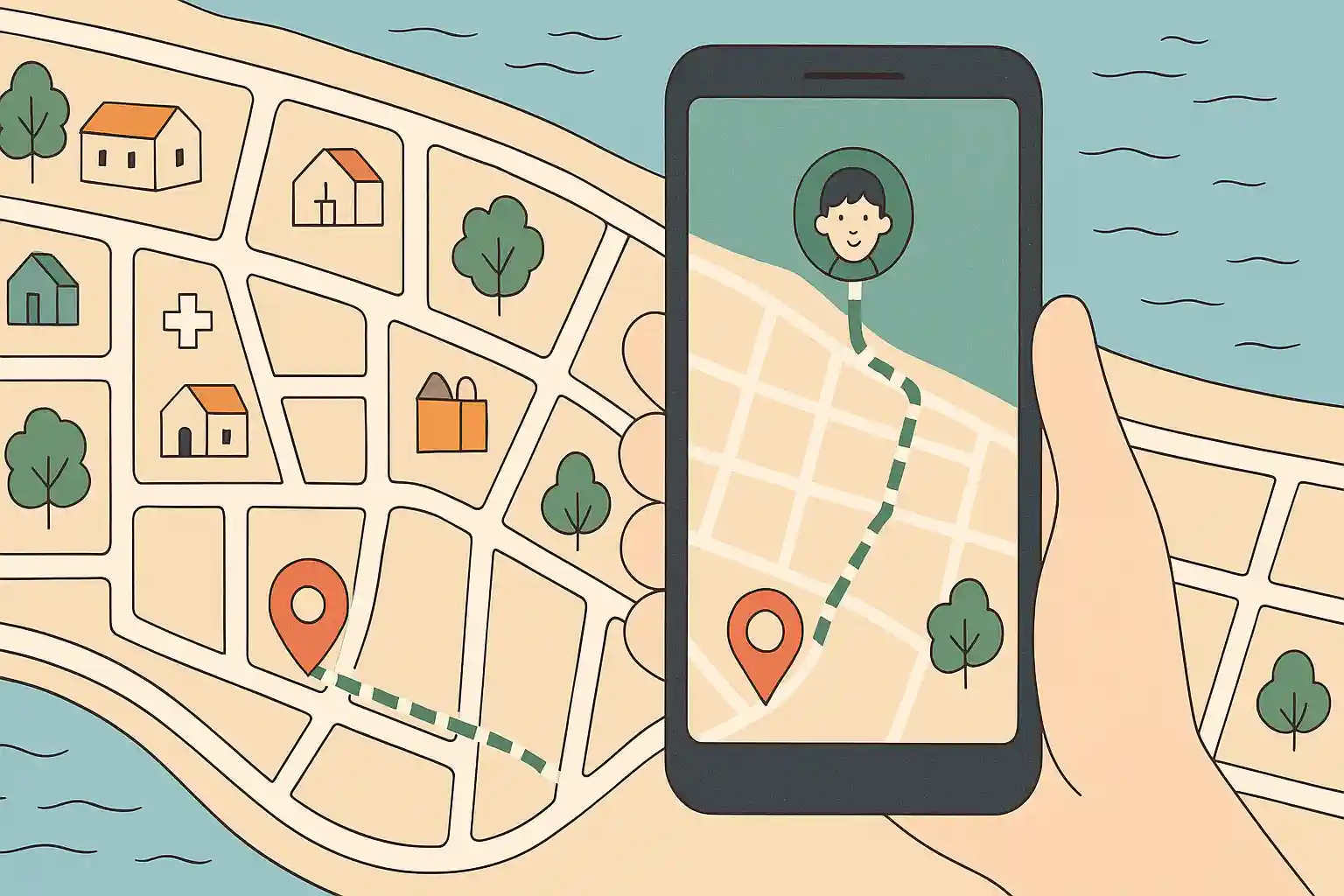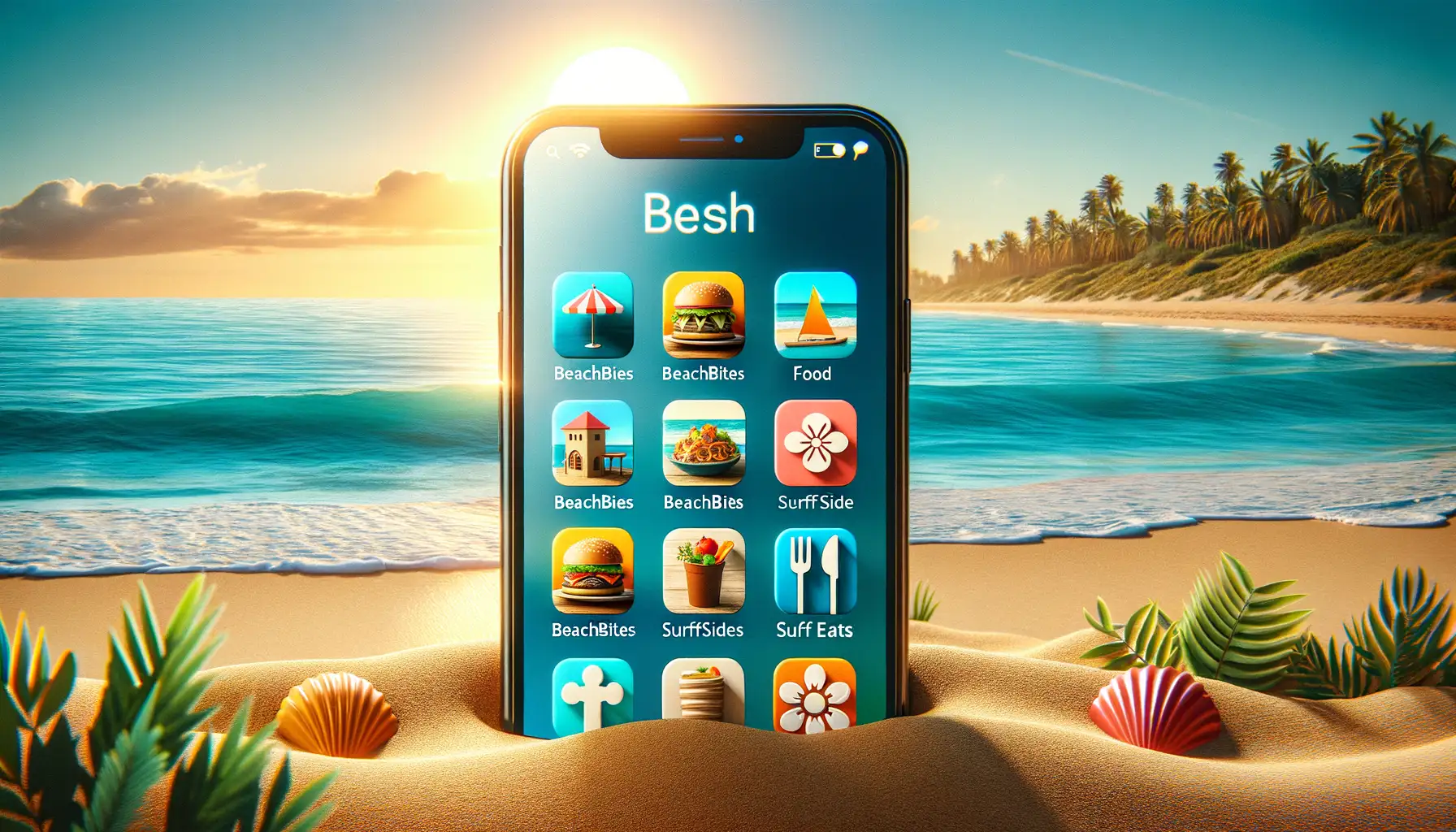A family beach vacation is an exciting opportunity to escape from worries of daily life and create lasting memories with your loved ones. Australia, with its stunning coastlines, crystal-clear waters, and golden sands, is a top destination for families seeking a relaxing getaway.
While the beach offers fun and adventure, safety measures stay crucially important to get everyone a carefree experience. Maintaining safety may require you to monitor your children’s location, track the phone number, and watch out for weather conditions. Below, there are key safety guidelines to follow that will make your beach trip enjoyable and secure for everyone.

Children’s Safety First
When you’re planning a beach vacation with children, they’ll heed to explore and enjoy the area on their own as well. Staying together at all times can be challenging, particularly in a large or crowded beach environment, or if you are travelling with children of different ages. Even if they’re not within your immediate sight, there are ways to keep everyone safe and secure.
One of the best tools for enhancing your peace of mind during a family trip is the NumberTracker app. It allows you to track the location of your children’s devices, giving you real-time updates about their whereabouts, no matter where they are on the beach or somewhere else. NumberTracker is especially useful when you’re abroad or at unfamiliar beaches, where the landscape can change rapidly, and you may not know exactly where your children are at all times.
The app provides several key features that are perfect for vacations abroad:
- Real-Time Tracking: See your child’s current location at any moment, which is particularly useful in large or busy beach settings or messy nearby towns.
- Geofencing Alerts: Set up virtual boundaries, and get alerts if your child moves beyond the designated safe zone, such as when they wander away from your spot on the beach or head toward a dangerous area.
- Location History: If you’re unsure where your child has been or want to check if they’ve wandered too far, you can view a history of their movements.
- Emergency Mode: If your child gets lost or encounters an emergency, you can easily send an alert to their device, helping them quickly get assistance.
By using NumberTracker, you’re ensuring that even if your child ventures off to explore or join friends, you’ll always know where they are, giving you confidence that they are safe and providing them with enough freedom to move around.

Water Safety Rules
Australian shores are primarily known for their beautiful beaches and inviting waters, but the ocean can also pose serious risks, especially for children or inexperienced swimmers. It’s essential to know the basic water safety rules before you and your family dive into the surf.
Supervise Children Closely
No matter how experienced your child is in the water, it’s crucial to supervise them closely, particularly when they’re near or in the water. Even shallow water turns out to be dangerous due to unexpected waves or sudden drops in depth.
Never Swim Alone
Teaching children the importance of swimming with a buddy is a vital rule to instill early. Swimming alone increases the risk of accidents, such as getting caught in strong currents or experiencing exhaustion. Always make sure your children swim within designated areas that are closely monitored by lifeguards to further reduce the risk of dangerous situations.
Understand Rip Currents
Rip currents are one of the most dangerous hazards at the beach. They can pull even the most experienced swimmers away from shore. It’s vital to educate your children and family members about how to identify rip currents. Typically, rip currents appear as a narrow, fast-moving channel of water moving away from the shore. Lifeguards often advise swimming at a slight angle to the shore to break free from rip currents.
Use Safety Gear
For children or family members who are not strong swimmers, life jackets are essential. Always equip your children with U.S. Coast Guard-approved life jackets to reduce the risk of drowning, particularly for younger children or those still learning to swim. Even if your child is an experienced swimmer, using life jackets or floatation devices can provide extra security, especially when playing in deep water or during sudden shifts in the tide.
Sun Protection
Beach sunshine is beautiful, but prolonged exposure to the rays can lead to sunburns, dehydration, and long-term health issues. Protecting your family from the sun’s harmful ultraviolet rays is a must for any beach outing. Here are a few sun protection tips to keep everyone safe under the sun:
Apply Sunscreen Regularly
Sunscreen is your first line of defense when it comes to preventing sunburns. Choose a broad-spectrum sunscreen with a high SPF (Sun Protection Factor) of at least 30 or higher for maximum protection. For young children, using a sunscreen designed specifically for sensitive skin is a good idea, as it can be gentler and less likely to cause irritation. Additionally, consider using sunscreen sticks for easier application, especially on kids who may not sit still for long.
Seek Shade During Peak Sun Hours
The sun is at its strongest between 11 a.m. and 3 p.m., which is when the UV radiation is most intense. During these hours, it’s a good idea to seek shade whenever possible to minimize exposure. Pack beach umbrellas, sunshades, or pop-up tents to create a shaded area for your family to retreat to when the sun becomes too harsh. This will give everyone a chance to cool off and relax while avoiding direct sunlight. For added protection, consider using beach tents with UV protection to safeguard your family from the sun.
Wear Protective Clothing and Accessories
In addition to sunscreen, wearing protective clothing is another great way to shield your skin from UV rays. Loose-fitting, lightweight clothing made from fabrics with a tight weave can provide coverage while still keeping you cool. For extra protection, look for clothes that have a UPF (Ultraviolet Protection Factor) rating to help block out harmful rays.
Weather Awareness
While the beach offers perfect weather conditions for fun and relaxation, weather here can change rapidly, and quick reactions can keep your family much safer.
Before heading to the beach, take the time to check for any flags, signs, or notices indicating the water’s condition. Many beaches display color-coded flags to communicate water safety levels. A green flag typically means calm and safe conditions for swimming, while a red flag signals dangerous conditions, such as high waves or strong currents. Always pay attention to these signals and heed lifeguard warnings.
Be sure to also look out for other local signage that may indicate hazards, such as jellyfish warnings or the presence of strong tides. If you’re unsure, don’t hesitate to ask a lifeguard or beach staff about current conditions to ensure you’re aware of any potential risks before you get in the water.
Sand Play Safety
The sand offers a perfect playground for kids to dig, build, and explore, but there are some important safety tips to consider before letting them play freely. While it’s tempting to let kids enjoy their sandcastles or bury each other in the sand, there are a few things to keep in mind for their safety.
Inspect the Area Before Play
Before letting your kids dive into the sand, take a few moments to inspect the area for any hidden dangers. Check for sharp objects like broken glass, rocks, or discarded trash that could cause injuries. Pay attention to jellyfish washed ashore as well, as their tentacles can still sting even after they’ve died. While most beaches have cleaning crews that remove debris, it’s always a good idea to scan the area yourself to ensure your kids will be playing in a safe spot.
Limit the Depth of Sand Holes
Digging holes in the sand is a favorite activity for many children, but it’s important to monitor the depth of the holes they dig. Deep holes can collapse, causing serious injuries. Set a limit for the depth of sand holes and encourage your children to dig only shallow pits. This will help prevent accidents like sand cave-ins, which can be dangerous, especially if the hole collapses on a child.
Hydration and Nutrition
Spending a day at the beach means plenty of outdoor activity, and whether it’s playing in the sand, swimming, or simply lounging under the sun, it’s essential to stay hydrated and nourished throughout the day. Dehydration can quickly sneak up on you, especially in hot climates like those found along Australia’s coastline.
Stay Hydrated
The first rule for any beach trip is to make sure you have plenty of water with you. Hot weather combined with outdoor physical activity makes dehydration a real risk, particularly for children, the elderly, and those not used to the heat. Bring a large cooler filled with cold water and encourage everyone to take frequent sips throughout the day. Avoid sugary drinks like soda, which can actually contribute to dehydration, and opt for water or electrolyte-rich beverages to replenish lost fluids.
Always check that there’s enough water to last throughout the day and don’t rely solely on beach vendors or nearby shops, as their supply may not always be available when you need it most.
Pack Healthy Snacks
In addition to hydration, it’s important to keep your energy levels up with nutritious snacks. High-energy snacks like granola bars, dried fruit, and nuts are ideal because they don’t spoil quickly in the heat. Avoid perishable foods like sandwiches that could spoil under the sun. Fresh fruit such as apples, grapes, or oranges is also a great option for a quick refreshment, providing hydration as well as energy.
Emergency Measures
No one wants to think about accidents or emergencies while on vacation, but being prepared can make all the difference if something goes wrong. From minor cuts and stings to more serious injuries, knowing how to handle emergencies can help you stay calm and take appropriate action.
Carry a First Aid Kit
Your kit should include essential supplies like bandages, antiseptic wipes, gauze pads, and tweezers to remove splinters or sand. You may also include pain relievers, allergy medication, and an anti-itch cream for skin irritation from sunburn or insect bites. Don’t forget any personal medications that family members may need.
For families with young children, it’s a good idea to include additional items such as baby wipes and a thermal monitor. Having these items readily available ensures that you can handle minor accidents or injuries right away without needing to leave the beach.
Teach Kids What to Do in an Emergency
In addition to being prepared yourself, it’s a good idea to teach your children what to do in case of an emergency. Explain what to do if they get lost, such as finding a lifeguard or another responsible adult to help. Practice what to do if someone is stung by a jellyfish or if they encounter another potential danger in the water or on the sand.
It’s also important to know the local emergency contact numbers for medical services and rescue teams. If you’re on a foreign beach, having a phone number for your country’s embassy or consulate can be helpful as well. In many places, beach staff and lifeguards are trained to assist in emergencies and can guide you to the necessary resources quickly.
Those measures seem like a large instruction. However, if you keep preparing with a plan, your Australian vacation is going to pass smoothly and chill for everyone. With modern solutions like NumberTracker you don’t even need to stay near your family all the time, as you’ll be informed about all of their routes without crossing personal borders.




